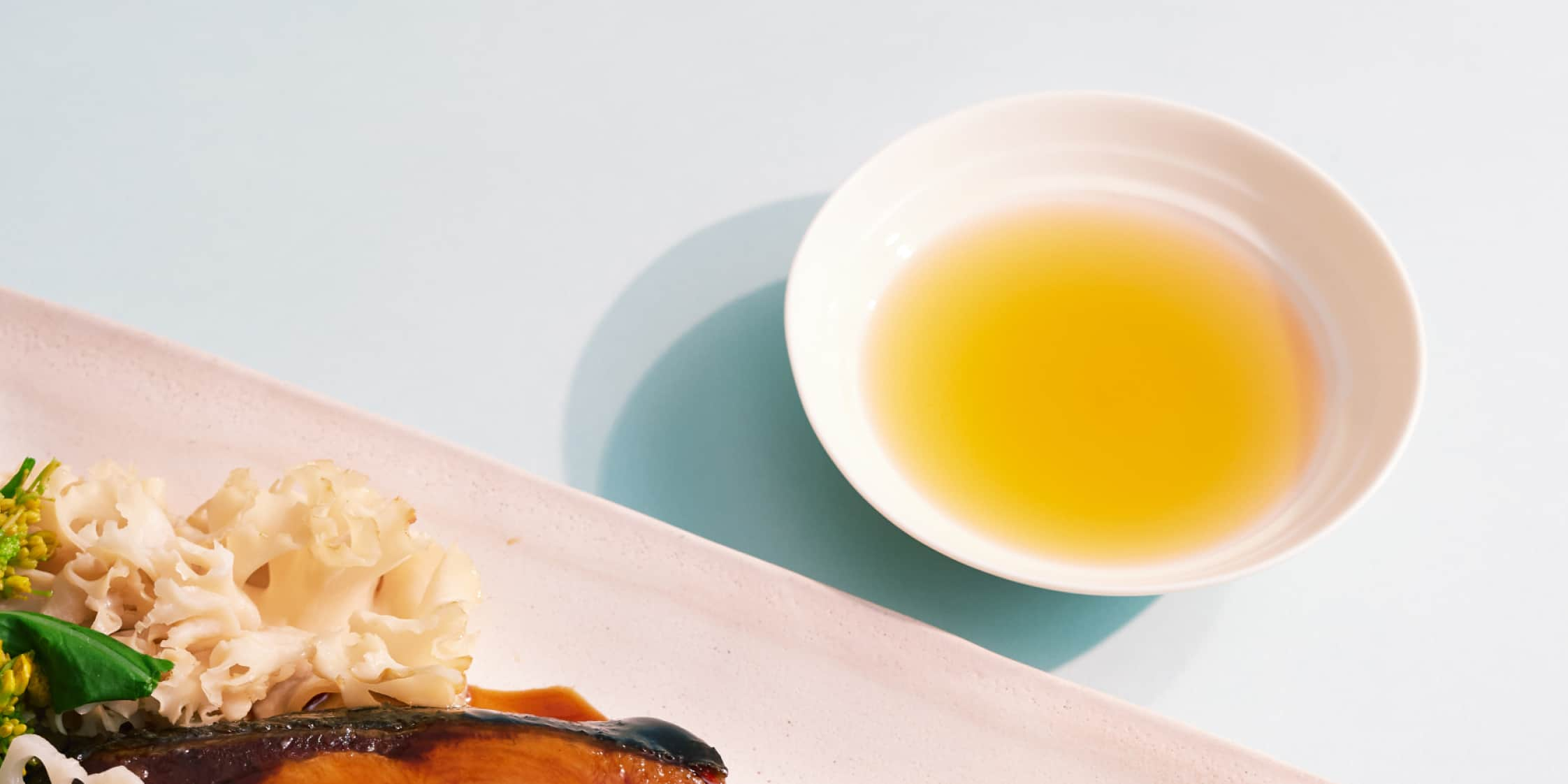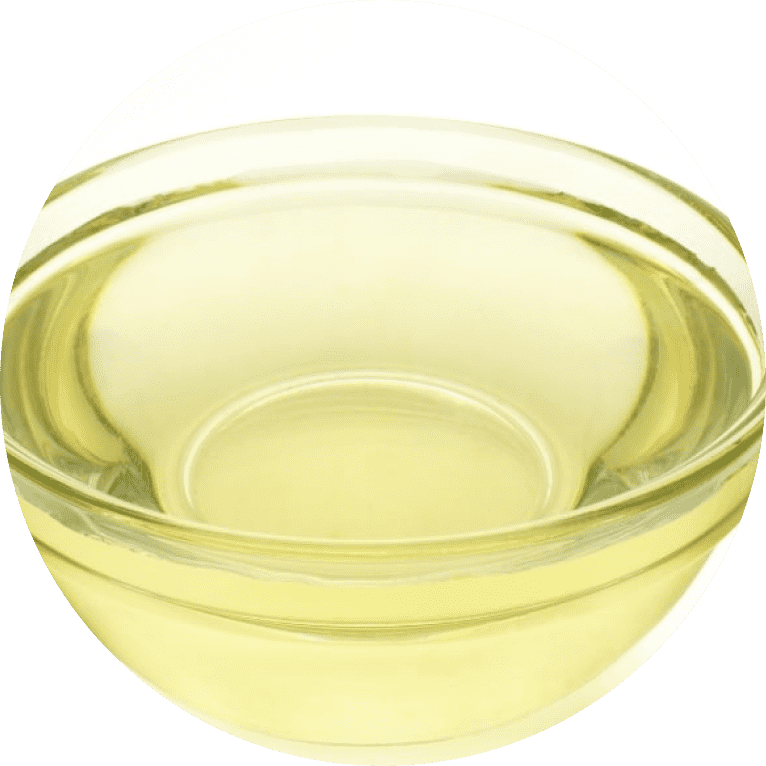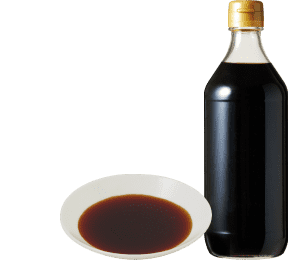MIRIN
SWEET
SEASONING
Study UMAMI


Fermented seasonings using koji are widely used throughout Japan throughout the year. Fermented seasonings such as soy sauce and miso are produced through fermentation using microorganisms called koji mold, and their distinctive flavors and rich umami are indispensable elements of many Japanese dishes.In this article, we will introduce "MIRIN SWEET SEASONING" among such fermented seasonings.
About
MIRIN SWEET SEASONING

History of mirin sweet seasoning
Mirin sweet seasoning is characterized by its subtle sweetness, which is made from combining rice koji,
steamed glutenous rice, and rice shochu which is then fermented and aged for months. During the Sengoku era (*1) mirin sweet seasoning was enjoyed as sweet SAKE. At the end of the Edo period (*2) it began to be used in the sauce for eels and soba broth and its use as a seasoning expanded.
(*1) Japanese historical period. Indicates approximately 150 years from 1467 to 1615.
(*2) Japanese historical period. Indicates approximately 265 years from 1603 to 1867.

Characteristics unique to Japanese mirin sweet seasoning
When you want to add a subtle sweetness unique to Japanese cuisine, add mirin sweet seasoning to create a superbly refined flavor.
Mirin sweet seasoning made in a traditional method instantly pleases your palate with its impactful sweetness and brings out the flavor. It is often used in simmered dishes and with baked fish.
Uncompromising work of the artisans
A mass-produced seasoning called “mirin-fu” is often made by blending amino acids and sugar without a fermenting process.
On the contrary, hon-mirin is prepared with time using glutenous rice, rice koji, and shochu or brewer’s alcohol by the hands of artisans.
Health Benefits
Mirin sweet seasoning contains various amino acids which are believed to help recover from fatigue.
Since the sweetness of mirin sweet seasoning is comprised of various sugars, including glucose and oligosaccharide, which are the source of nutrients for the intestinal bacteria, mirin sweet seasoning helps regulate gastrointestinal conditions.

Aspirations of MIRIN SWEET SEASONING makers
Mirin sweet seasoning is indispensable in the Japanese diet culture. What goes through MIRIN makers’ minds and what do they do daily to make flavorful mirin sweet seasoning? We interviewed Mr. Toshio Sumiya, the third generation mirin sweet seasoning maker of SUMIYA BUNJIRO BREWERY in Aichi Prefecture.

The mellow sweetness is perfect for making desserts as well as Japanese cuisine. Mirin sweet seasoning is gaining popularity as a liqueur.
Please tell us about the traditional MIRIN making method treasured by SUMIYA BUNJIRO BREWERY.
Sumiya:
The key to enhancing the flavor of mirin sweet seasoning is using rice koji to fully bring out the quality of ingredients—namely the quality of glutenous rice. At SUMIYA BUNJIRO BREWERY we prepare glutenous rice, and rice koji that we sourced ourselves, and our homemade rice shochu to make moromi (*3). We take a great deal of time—3 months for brewing and 2 years for aging—so that microorganisms, like the koji fungus, bring out the sweetness and flavor. No heat is added to speed up the aging process. With the changing seasons here in the Mikawa region, the mirin sweet seasoning’s flavor is deepened.
(*3) Indicates a fluid in which rice, rice koji, and water which is the basis for SAKE are poured into a tank and fermented.
We make two types of mirin sweet seasonings here; A MIRIN made from specially-cultivated rice and a MIRIN made from organic rice that is free of pesticides and chemical fertilizers. We have been exporting organic MIRIN to the macrobiotic markets overseas for more than 40 years. It does not use any bulking

Do you have recommended recipes using mirin sweet seasoning made by SUMIYA BUNJIRO BREWERY?
Sumiya:
Mirin sweet seasoning has long been used in the world of Japanese cuisine. Its sweetness smoothly melts away without lingering on the tongue, not like the direct sweetness of sugar. The sweetness also changes into umami. As mirin adds luster in cooking, it is recommended to be used in simmering dishes.
Mirin sweet seasoning is also perfect for TERIYAKI dishes including salmon and chicken. Marinade the ingredients in a sauce made of soy sauce and mirin for 20 to 30 minutes before grilling and use the leftover marinade as the sauce.
Mirin sweet seasoning can be considered rice liqueur due to the way it’s made. Our mirin has gained an excellent reputation that it has the “sweetness in common with noble rot wine.” Our mirin has been used for desserts, such as in chocolate making and marinating dried fruits for pound cakes. We know a culinary specialist in London who pours mirin in his tea.
What other beneficial effects can be expected from using mirin sweet seasoning in cooking?
Sumiya:
For instance, NIKUJAGA, a stew in which pork, potatoes, and carrots are simmered together, can be simmered with mirin to prevent potatoes from breaking apart while maintaining their shape. Mirin envelopes the flavor inside and firms up the starch to wrap the goodness inside. This is also effective in situations in a restaurant where it takes time from when the dish was made until it is served.
There was an occasion where a company that makes pound cakes and bread for toasting developed a product using mirin instead of sugar. The product did not turn mealy over time and remained moist.
Lastly, please tell us what you’d like to promote to people overseas.
Sumiya:
In dessert making substitute sugar with mirin for a subtle sweetness. Boil down mirin to half to create a mellow texture, which can be used as a sauce. In terms of aroma, French and Italian cuisines only had flavors of spices, herbs, and fruits before. But now I am hoping that mirin will be featured in all kinds of cuisines around the world as well as a seasoning for Japanese cuisine, and mirin’s flavor and aroma will win the admiration. We’re eager for everyone to experience the aroma generated from aging.
6-3, Nishihama-machi, Hekinan City, Aichi, Japan, 447-0843
+81-566-41-0748
Learn about other
seasonings






